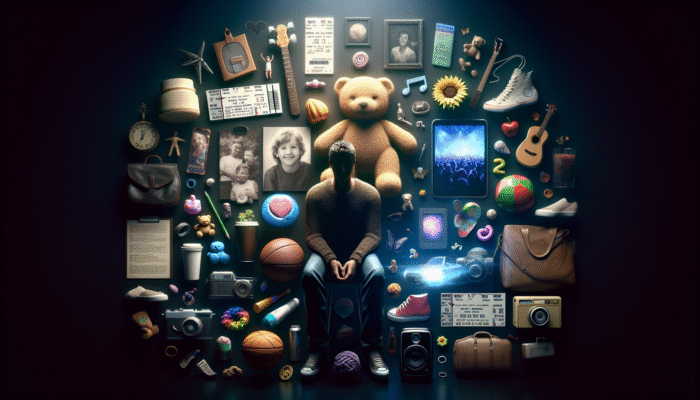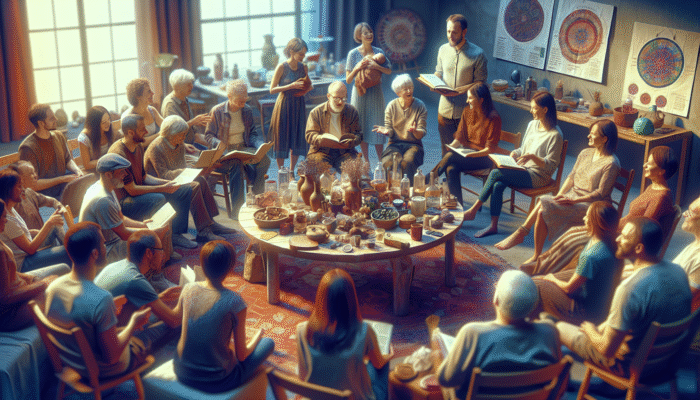Unlock the Secrets to Sorting and Preserving Your Most Treasured Memories
Uncover and Honor Your Deepest Cherished Moments

Navigating the emotional maze of choosing which sentimental items to retain or release can feel daunting and overwhelming, particularly when surrounded by beloved souvenirs that evoke powerful emotions and memories. To streamline this experience, start by organizing your belongings based on the memories they invoke. Create distinct categories such as childhood keepsakes, mementos tied to pivotal life events, or objects that remind you of cherished loved ones. This method not only clarifies your thought process but also allows you to focus on the essence of each memory. For example, a worn teddy bear might capture the warmth and security of childhood, while a collection of concert tickets could symbolize joyful experiences shared with friends.
Exploring the deeper significance of each item can uncover layers of emotional meaning. Engage in reflective inquiries such as, “What does this object truly signify for my life?” or “Does this item genuinely represent the memory I treasure?” This internal dialogue can assist you in identifying the essential pieces among the clutter, simplifying your decision-making process regarding what to keep. Allow yourself sufficient time for this emotional exploration, creating a conducive space for reflection. The ultimate goal is to pinpoint the most meaningful items that encapsulate your personal journey while being conscious of the space constraints you face in your living environment.
Establishing a structured plan can transform this overwhelming task into a more manageable endeavor. Consider using a spreadsheet to document each item, the memories linked with it, and your decision regarding its future. This visualization can reveal patterns in your emotional attachments, facilitating a smoother and more intentional decluttering process. By creating this strategic approach, you can effectively manage your belongings while honoring the memories they represent.
Create Your Unique Memory Box to Safeguard Special Moments
Once you have identified the items that hold significant emotional value, the next step is to design a memory box that encapsulates these precious moments. This elegant solution not only protects your treasured memories but also contributes to a harmonious living environment. Select a sturdy, visually appealing box that resonates with your personal style—this could range from an antique trunk to an attractive storage container, or even a simple shoebox that you personalize to reflect your individuality and taste.
Limit the contents of your memory box to a carefully curated collection of items that authentically represent your most treasured memories. This assortment may include photographs, <a href="https://limitsofstrategy.com/how-well-designed-protest-signs-can-aid-your-campaign/">handwritten letters</a>, or small keepsakes that evoke strong emotions. The goal is to create a visual narrative of your life journey, allowing you to revisit these experiences at your leisure without feeling overwhelmed by clutter. A thoughtfully organized memory box serves as a personal treasure chest, encapsulating the essence of your most cherished moments.
Once your memory box is complete, place it in a location that promotes reflection—perhaps on a shelf in your living room or in a drawer in your bedroom. This arrangement not only ensures that your memories are easily accessible but also nurtures a sense of organization within your home. Remember, the beauty of a memory box lies in its ability to encapsulate the spirit of your past. By creating this special repository, you embrace your history while moving towards a more organized, clutter-free future.
Utilizing Digital Solutions to Preserve Your Most Treasured Memories
In today’s digital-centric world, preserving your memories has never been more convenient. By digitizing photographs, letters, and essential documents, you can keep your treasured items alive without the limitations of physical storage. Start by scanning photographs or using user-friendly apps designed specifically for efficient digitization. Many platforms provide intuitive tools for securely storing your memories in the cloud, protecting them from physical damage over time.
After converting your memories into digital formats, consider creating online albums or slideshows that celebrate your unique life journey. This not only serves as a contemporary keepsake but also simplifies sharing with family and friends, fostering connections as you reminisce about shared experiences. Moreover, digital storage offers unparalleled convenience; you can access your beloved memories anytime, anywhere, ensuring they remain a vital part of your life without occupying valuable physical space in your home.
It is important to regularly back up your digital files. Utilize external hard drives or reputable cloud storage services to safeguard your memories against unforeseen circumstances. Embracing these technological solutions allows you to declutter while preserving the emotional significance of your past, ultimately creating room for new experiences without losing sight of those that have shaped your identity and story.
Engaging Your Loved Ones in Your Storytelling and Decluttering Adventure

Involving family and friends in your decluttering journey can add depth and meaning to the process. As you sift through items, share the stories associated with each piece, reinforcing their sentimental value. This act of storytelling not only enriches your experience but also allows loved ones to offer their perspectives, potentially uncovering memories you may have overlooked or forgotten.
Consider organizing a small gathering where each participant can bring a cherished item to share its significance. This not only fosters a sense of community but also makes the process of letting go feel less intimidating. Sharing the memories tied to items can help you clarify which possessions are truly vital to your identity, thus enhancing your decision-making process.
Highlighting shared memories can transform decluttering into a celebration of life’s moments rather than a painful farewell to the past. This communal approach nurtures emotional support and understanding, ultimately leading to clearer decisions about what to keep. Seize this opportunity to bond over shared experiences, creating new memories in the process while fostering a collective sense of connection.
Mindfully Navigating Emotional Attachments to Your Belongings
Understanding the Profound Emotional Bonds We Form with Our Possessions
The emotional connections we establish with objects can be profound, often transcending their mere material worth. It’s essential to acknowledge that these attachments may stem from various sources, including nostalgia, love, or even guilt. Understanding the origins of your feelings is a crucial first step in making objective decisions about what to retain and what to release.
For example, an old piece of furniture may evoke cherished memories of a beloved family member. Recognizing this connection can guide you in determining whether the item still serves a purpose in your current life or is merely a relic of the past. Distinguishing between items that provide comfort and those that simply weigh you down is vital in the decluttering process, allowing for a clearer perspective on what truly matters.
Consider maintaining a journal to articulate your thoughts regarding each item. This reflective practice can illuminate why certain possessions hold significance and whether they deserve a place in your life moving forward. By gaining a deeper understanding of your emotional ties, you empower yourself to make decisions grounded in clarity rather than sentimentality, facilitating a healthier relationship with your belongings.
Establishing Healthy Emotional Boundaries with Your Belongings

Setting limits on the number of sentimental items you keep is crucial for maintaining a clutter-free environment. Establishing emotional boundaries may initially seem challenging, yet it is essential for promoting clarity in your decision-making process. One effective approach is to designate a specific area for sentimental items. Once that space reaches its maximum capacity, it serves as a natural signal of your limits. This practice prevents your belongings from overtaking your home, ensuring that each item has its designated place without overwhelming your living space.
In addition to this physical boundary, consider establishing emotional guidelines. For example, decide to keep a maximum of ten items from a specific timeframe in your life. This decision encourages you to identify the most meaningful pieces while promoting the release of those with less significance. By doing so, you can cultivate a more intentional relationship with your possessions.
This balanced approach allows for practicality without sacrificing emotional connections. The goal is to honor your memories while embracing the present. By establishing and respecting emotional boundaries, you foster a healthier relationship with your belongings, paving the way for a peaceful and organized living environment.
Seeking Support from Your Trusted Network During the Decluttering Process
Navigating the emotional landscape of decluttering can be a challenging journey, and reaching out for support from friends and family can significantly lighten this load. Engaging loved ones not only provides emotional encouragement but also offers valuable perspectives as you confront the memories tied to your possessions. They can provide reassurance as you let go of items that no longer serve your purpose, helping dispel feelings of guilt or uncertainty.
Consider inviting a trusted friend or family member to accompany you during the decluttering process. Their presence can offer comfort and accountability, making it easier to navigate emotionally charged decisions. Furthermore, discussing your attachments with someone who understands your history can deepen connections and enhance emotional clarity.
Organizing a decluttering day can also transform this task into a shared experience, turning an overwhelming chore into a bonding opportunity. By leaning on your support network, you create space for collective healing, allowing you to move forward with a lighter heart and a more organized home.
Incorporating Mindfulness Practices into Your Decluttering Journey
The process of letting go often stirs up complex emotions. Practicing mindfulness can assist you in navigating these feelings, allowing for a more intentional and thoughtful approach to decluttering. Mindfulness encourages you to remain present, connecting with your emotions without becoming overwhelmed. Techniques such as meditation or deep breathing can ground you, providing clarity when faced with challenging decisions regarding sentimental items.
Begin by taking a few moments to breathe deeply before you tackle your belongings. This simple act can center your thoughts and create space for reflection. As you handle each item, focus on the emotions it evokes, acknowledging any feelings that arise without judgment. This practice can illuminate the significance of the item and guide you towards more objective decision-making.
Integrating mindfulness into your decluttering journey fosters self-awareness and emotional resilience. You may uncover insights about your attachments that empower you to make choices aligned with your present life. Embracing this mindset ultimately transforms the experience into one of growth and healing, paving the way for a more organized and serene living space.
Encouraging New Experiences and Memories for a Brighter Future
While honoring the past holds importance, focusing on creating new experiences is equally vital. Engaging in activities that promote personal growth and connection can alleviate emotional attachments to old items. Start by exploring new hobbies or interests that resonate with your current self. Whether it’s painting, joining a book club, or volunteering, these activities enrich your life and generate fresh memories to cherish.
This proactive perspective encourages a shift in thinking, allowing you to appreciate the beauty of moving forward rather than clinging to the past. As you cultivate new relationships and experiences, the emotional weight of old possessions may naturally lessen, making it easier to let go. This transition opens the door to a vibrant life filled with new opportunities.
Additionally, consider commemorating significant milestones with new traditions that celebrate your journey. For instance, instead of retaining every birthday card from the last decade, create an annual photo album that captures the highlights of each year. This change not only preserves memories but also reinforces the idea that new experiences can be just as meaningful as those from the past, enriching your life narrative.
Investing in your present and future fosters a sense of freedom, allowing you to release the emotional baggage associated with old items. Ultimately, embracing new memories can transform your relationship with material possessions, leading to a more fulfilling and clutter-free life.
Effective Strategies for Letting Go of Sentimental Items
Implementing the One-In-One-Out Rule for a Balanced Living Space
Adopting the one-in-one-out rule is a powerful strategy for maintaining a harmonious living environment. This straightforward principle is simple yet effective: for every new item you acquire, you must let go of an existing one. Such a practice encourages mindful consumption and helps prevent the accumulation of unnecessary clutter in your home.
Before making a new purchase, reflect on whether it genuinely enhances your life. This consideration can help curb impulse buying and foster a more intentional approach to your belongings. For example, if you find yourself drawn to a new dress, contemplate parting with an older piece that you no longer wear. This practice reinforces the notion that each item deserves space in your home only if it contributes positively to your life and aligns with your values.
Additionally, this approach enhances your emotional clarity. By assessing the significance of each new item, you become more attuned to your needs and desires, ensuring that your possessions align with your current lifestyle and aspirations. The one-in-one-out rule not only promotes a clutter-free environment but also cultivates a sense of discipline and awareness in your consumption habits.
Establishing Timelines for Efficient Decision-Making
Setting a specific timeframe to make decisions about each item can significantly expedite the decluttering process. This tactic helps you avoid lingering on emotional attachments and encourages prompt decision-making. Consider setting a timer for a designated duration, such as 10 or 15 minutes, to assess a specific category of items.
As the timer begins, focus solely on the task at hand, minimizing distractions. While evaluating your belongings, ask yourself if the item brings you joy or serves a purpose in your life. If the answer is no, consider parting with it immediately. This time constraint compels you to trust your instincts and make choices rooted in your current needs and feelings.
Moreover, implementing time limits transforms decluttering from an overwhelming chore into a manageable task. Breaking the process into smaller segments allows for sustained momentum, making it less daunting overall. As you make progress, you’ll build confidence in your decision-making abilities, and the emotional weight of decluttering will start to lift.
Donating with Intention to Foster a Positive Impact
Choosing to donate your belongings can alleviate some of the emotional burden associated with letting go. Knowing that your items will benefit others can foster a sense of purpose and fulfillment. Research local charities that align with your values, and consider which organizations would best appreciate the items you no longer need.
For instance, donating clothes to a shelter can directly impact individuals in need, while contributing books to a local library promotes literacy in your community. Viewing your decluttering efforts through the lens of generosity can make parting with possessions feel less like a loss and more like a valuable contribution to the greater good.
Take the time to reflect on the impact your donations can create. This perspective not only eases feelings of guilt but also nurtures a connection to your community. As you let go of items, you create space for new experiences while simultaneously uplifting others. Embracing this mindset allows you to navigate the decluttering process with grace and intention, fostering a sense of fulfillment.
Confronting the Guilt Associated with Discarding Sentimental Items
Recognizing Your Feelings of Guilt as a Normal Reaction
Experiencing guilt over discarding items is a common phenomenon, often deeply rooted in the memories or emotions they carry. Acknowledging these feelings is critical for facilitating forward movement. Understand that it is entirely normal to struggle when parting with objects that have been integral to your life for years. This recognition can help validate your emotional response, making it easier to process and ultimately release your attachments.
Consider journaling your feelings about specific items. Expressing your thoughts can provide clarity, enabling you to confront the guilt directly. For instance, if you feel sorrow over letting go of a family heirloom, reflect on the memories it represents and consider whether those sentiments can be cherished without the physical object. This practice can foster a sense of acceptance and understanding as you navigate your emotional landscape.
Additionally, talking with someone who understands your emotional struggles, such as a friend or family member, can be beneficial. Sharing your feelings can foster empathy and understanding, alleviating some of the guilt. Remember that letting go is not about erasing memories but rather about embracing a more intentional approach to living that honors your past while allowing for growth.
Highlighting the Positive Benefits of Decluttering for a Healthier Space
Redirecting your focus towards the advantages of decluttering can help counteract feelings of guilt. Embrace the idea that releasing belongings paves the way for a more organized and serene home. This newfound space can foster creativity, mindfulness, and a sense of tranquility that positively impacts your daily life.
Consider the tangible benefits of decluttering. A streamlined environment can enhance your mental clarity and productivity, allowing you to concentrate on what truly matters in your life. Moreover, embracing a clutter-free space creates a more inviting atmosphere for family and friends, enhancing social interactions and deepening connections.
As you let go of items, celebrate the positive changes occurring in your life. Focus on how decluttering contributes to a healthier lifestyle, both physically and emotionally. By reframing your perspective, you can cultivate a sense of gratitude for the space you’re creating and the opportunities for personal growth that arise from the act of letting go.
Transforming Your Perspective on Letting Go of Belongings
Reframing your outlook on the act of letting go can significantly influence your emotional experience. Instead of viewing the process as a loss, consider it an opportunity for growth and renewal. This shift in mindset can alleviate feelings of sadness associated with parting from your possessions, making room for new experiences.
Visualize the act of releasing items as creating space for new adventures and memories. By letting go of old belongings, you open doors to fresh connections, opportunities, and possibilities. This idea can encourage you to embrace change with enthusiasm rather than trepidation. For instance, if you part with a collection of items from a past relationship, focus on the personal growth you’ve achieved since then rather than the memories tied to those possessions.
Engaging in practices that reinforce this new perspective can be beneficial. Consider setting intentions for your decluttering journey, such as “I am making space for new experiences” or “I honor my past while embracing my future.” These affirmations can guide you toward a more positive mindset, ultimately transforming the process into a celebration of your evolving identity and personal journey.
Strategies for Sustaining Emotional Clarity in Your Living Space
Scheduling Regular Decluttering Sessions to Maintain Order
Designating regular decluttering sessions can significantly enhance emotional clarity in your living space. Consistency is essential for ensuring that your environment remains organized and free from emotional clutter. Allocate specific times each month or season dedicated to reviewing your possessions and evaluating their relevance in your life.
During these sessions, approach your belongings with the intention of honoring your memories while remaining open to letting go. By establishing a routine, you cultivate mindfulness regarding your possessions, making it easier to identify items that no longer serve you. This structured approach fosters a proactive mindset, allowing you to maintain clarity and organization.
Furthermore, regular decluttering creates an opportunity for reflection and growth. As you review your items over time, you may notice shifts in your emotional attachments or priorities. This awareness allows you to adapt your approach, ensuring that your living space evolves alongside you. Embracing this practice promotes a sense of control and clarity, facilitating a healthier relationship with your belongings and your environment.
Practicing Mindfulness When Acquiring New Items
Being conscious of what you bring into your home is essential for maintaining emotional clarity. Each new acquisition should enhance your life rather than contribute to clutter. Before purchasing anything, ask yourself if the item aligns with your current needs and desires. This reflective process can help curb impulse buying and ensure that your possessions resonate with your intentions and values.
Consider adopting a waiting period for new purchases. For instance, if you discover something you wish to buy, wait 24 hours before making the decision. This practice allows you to evaluate your emotions and motivations, ensuring that your purchase will positively contribute to your life and align with your overall goals.
Cultivating mindfulness in your acquisition habits fosters a more intentional relationship with your belongings. By being selective about what enters your home, you create an environment that reflects your values and aspirations. This conscious approach fosters emotional clarity and can significantly reduce feelings of overwhelm associated with clutter, allowing for a more peaceful living space.
Embracing Gratitude Throughout Your Decluttering Journey
Nurturing a sense of gratitude for the memories and experiences linked to your belongings can ease the process of letting go. By focusing on the positive emotions associated with your possessions, you can cultivate a healthier relationship with them. Practicing gratitude allows you to honor your past while embracing the present with an open heart and mind.
Consider incorporating gratitude rituals into your decluttering journey. For instance, before parting with an item, take a moment to reflect on the joy it once brought you. Express appreciation for the experiences and lessons tied to it, acknowledging that you can carry those sentiments with you even without the physical object. This practice can shift your focus from loss to appreciation, fostering emotional resilience.
Moreover, consider maintaining a gratitude journal where you document the positive aspects of your life and the memories that shape you. This practice can help reinforce a mindset of abundance, making it easier to release items without guilt. As you cultivate gratitude, you create a more positive emotional environment, empowering you to embrace the journey of decluttering with a lighthearted spirit.
Celebrating Your Achievements on the Decluttering Journey
Reflecting on Your Personal Growth and Progress
Taking the time to reflect on your decluttering journey is vital for acknowledging your emotional growth. Regular introspection allows you to appreciate how far you’ve come and the positive transformations that have unfolded in your life. Set aside moments to contemplate your progress, whether through journaling, meditation, or simply enjoying a quiet moment with a cup of tea to gather your thoughts.
As you reflect, consider the emotions you experienced along the way. What challenges did you face, and how did you overcome them? Celebrating your resilience and determination can bolster your confidence, encouraging you to continue on your path toward a clutter-free life. This practice not only reinforces your emotional growth but also highlights the importance of self-compassion in your journey.
Moreover, reflecting on your journey fosters a sense of gratitude for the memories and experiences that have shaped you. By acknowledging the lessons learned and the growth achieved, you empower yourself to move forward with clarity and purpose. This practice reinforces the notion that letting go is not an end but a step towards new beginnings and opportunities for personal development.
Rewarding Yourself for Your Hard Work and Achievements
After a successful decluttering session, acknowledging your hard work and dedication is crucial. Treating yourself to something special reinforces positive behavior and motivates you to continue on your journey. Consider rewarding yourself with a small indulgence, such as a favorite snack, a relaxing bath, or even a new book that sparks joy and ignites your passion for learning.
Establishing a reward system can create a positive feedback loop, making the decluttering process feel more fulfilling. For example, set milestones for your decluttering goals and plan rewards for when you achieve them. This approach encourages motivation and helps the journey feel less burdensome, transforming it into a series of attainable challenges.
Additionally, sharing your achievements with others can amplify the sense of accomplishment. Letting friends or family know about your progress fosters support and encouragement, creating a community around your decluttering efforts. Celebrate your victories, no matter how small, as each step forward brings you closer to a more organized and serene living space.
Inspiring Others by Sharing Your Success and Journey
Sharing your decluttering achievements with others can motivate them to embark on their own transformative journeys. As you celebrate your progress, consider documenting your experiences on social media or hosting a gathering to discuss your journey. Sharing can cultivate a sense of community, creating a supportive environment where others feel encouraged to make positive changes in their lives.
When recounting your successes, be candid about the challenges you faced and the strategies that worked for you. This transparency not only reinforces your accomplishments but also provides valuable insights to those seeking to declutter their spaces. By sharing your story, you foster connections based on mutual experiences and growth, creating an uplifting atmosphere for everyone involved.
Furthermore, inspiring others to take action adds a layer of purpose to your journey. Witnessing the positive impact of your efforts on those around you can reinforce your commitment to maintaining an organized and clutter-free life. Embrace the opportunity to be a source of encouragement and motivation for others, creating a ripple effect of positive change in your community.
Documenting Your Decluttering Journey for Future Reflection
Maintaining a journal or capturing photos to visually track your decluttering journey can be a powerful tool for celebrating your progress. Documenting your achievements allows you to reflect on the transformations you’ve made over time, reinforcing your commitment to a clutter-free lifestyle. This visual narrative serves as a reminder of your journey and the emotional growth you’ve experienced.
Start by taking “before” photos of spaces that feel overwhelmed by clutter. As you declutter, capture “after” images that showcase your hard work and dedication. This visual representation serves as a tangible reminder of your progress, providing motivation to continue on your journey and to inspire others.
Incorporate journaling into your routine to document your thoughts and feelings throughout the process. Reflect on the challenges encountered, emotions experienced, and lessons learned. This reflective practice fosters self-awareness and encourages a deeper understanding of your relationship with possessions. By regularly reviewing your journal entries and photos, you create a comprehensive narrative of your decluttering journey, allowing you to celebrate your growth and resilience.
Setting New Decluttering Goals to Maintain Momentum
After celebrating your achievements, it is essential to set new decluttering goals to maintain momentum on your journey. Establishing clear, achievable objectives allows you to focus your efforts and continue progressing toward a clutter-free existence. Start by identifying specific areas in your home that require attention and create a timeline for when you aim to tackle them.
Consider incorporating themes into your goals. For instance, dedicate one month to decluttering your wardrobe, followed by focusing on your living space. This structured approach keeps you organized and motivated while ensuring that you address all aspects of your home over time, fostering a sense of accomplishment.
As you set new goals, remember to celebrate your successes along the way. Each milestone reached is an opportunity to reinforce positive behavior and maintain your commitment to decluttering. By continuously setting and achieving goals, you cultivate a lifestyle that embraces simplicity and emotional clarity, paving the way for a more fulfilling existence.
Frequently Asked Questions About Decluttering and Emotional Attachments
What effective emotional packing tips can help during clearance?
Effective emotional packing tips for clearance involve strategies designed to declutter sentimental items while managing emotional attachments. These tips focus on recognizing key memories, setting boundaries, and utilizing mindfulness techniques to ease the process of letting go.
How can I determine which sentimental items to keep?
Start by categorizing items according to the memories they evoke and reflecting on their significance. Consider whether they contribute positively to your current life. Focus on retaining items that genuinely resonate with your identity and values, ensuring that your belongings reflect who you are today.
What should I do with items I choose to let go of?
Consider donating, recycling, or selling items to ensure they find new homes. Donating to charities can provide a sense of purpose as you release possessions, knowing they’ll benefit others in need. This practice not only helps others but also enriches your own experience of decluttering.
How can I overcome feelings of guilt when discarding items?
Acknowledge your feelings of guilt and recognize that it’s a normal part of the process. Shift your focus to the benefits of decluttering, such as creating a more organized space and making room for new experiences. Remind yourself that letting go does not erase memories but instead honors them.
What techniques can assist with managing emotional attachments to items?
Practice mindfulness techniques to process your emotions regarding items. Reflect on the memories they evoke and establish emotional boundaries to prevent overwhelming attachments from accumulating. This approach fosters clarity and helps you navigate your relationship with your belongings more effectively.
How often should I engage in decluttering my possessions?
Schedule regular decluttering sessions, such as monthly or seasonally, to maintain emotional clarity and prevent clutter from reaccumulating. Consistency is key to ensuring a balanced living space that promotes peace and organization.
What does the one-in-one-out rule entail?
The one-in-one-out rule dictates that for every new item you bring into your home, you must let go of an existing one. This practice promotes mindful consumption and helps maintain balance in your possessions, fostering a more intentional approach to your belongings.
How can I celebrate my decluttering achievements?
Take time to reflect on your progress, reward yourself for milestones achieved, and share your success with friends or family. Celebrating your journey reinforces positive behavior and encourages continued commitment to a clutter-free lifestyle.
What are some effective tips for digitizing memories?
Scan photos, documents, and other memorabilia to create digital versions while preserving their essence. Utilize cloud storage or external hard drives to ensure your digital memories are secure and easily accessible, safeguarding them for years to come.
How can I include loved ones in the decluttering process?
Invite family and friends to share memories associated with items you’re decluttering. Engaging them in storytelling can enhance emotional support and help you make informed decisions about what to keep. This collaborative approach can foster a shared sense of purpose and connection.
Connect with us on Facebook!
The Article: Emotional Packing Tips for Clearance: A Guide to Letting Go Was First Found At https://birminghamhouseclearance.com
The Article Emotional Packing Tips: A Guide to Letting Go During Clearance Was Found On https://limitsofstrategy.com
References:
Emotional Packing Tips: A Guide to Letting Go During Clearance



